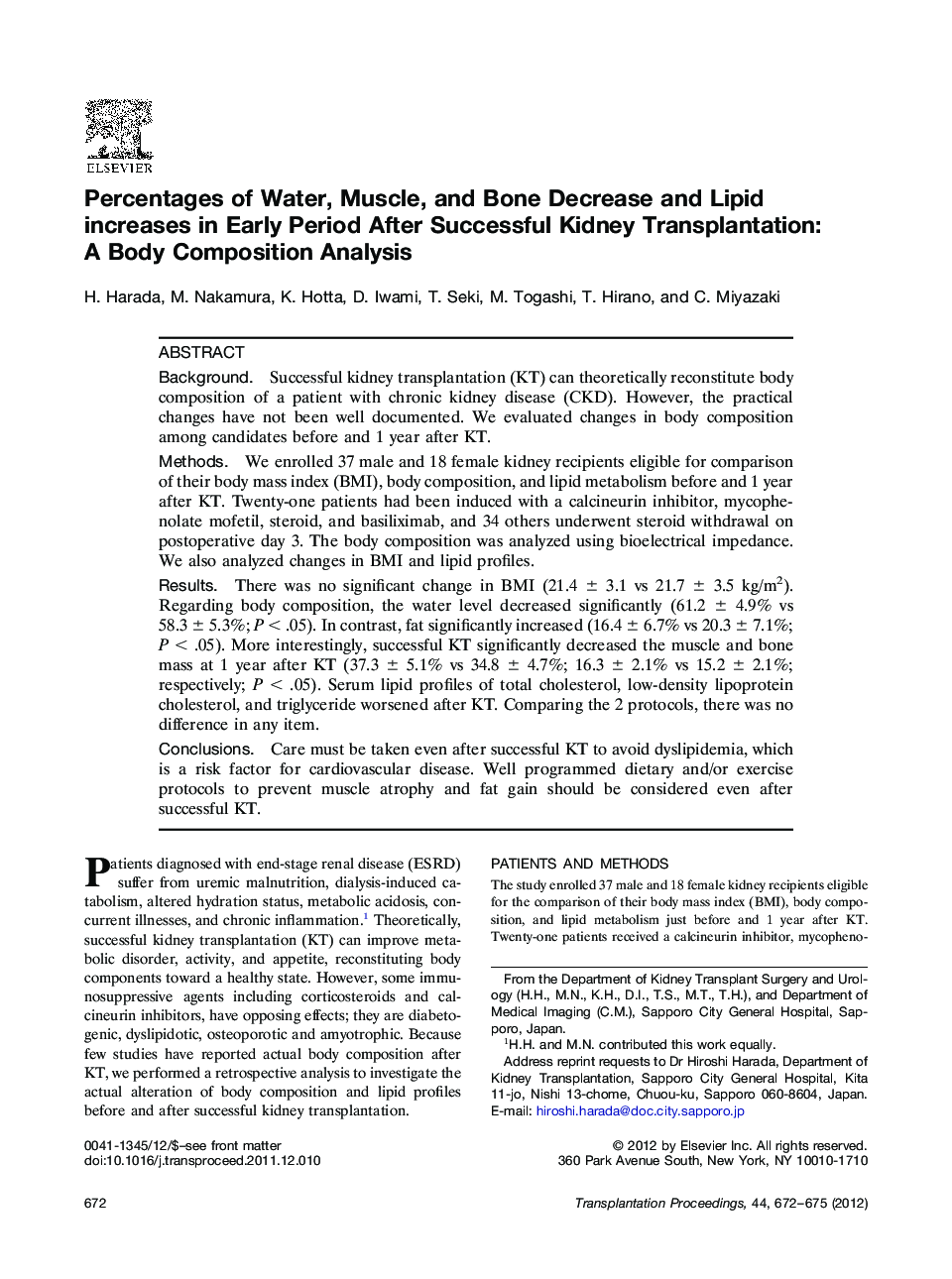| Article ID | Journal | Published Year | Pages | File Type |
|---|---|---|---|---|
| 4257766 | Transplantation Proceedings | 2012 | 4 Pages |
BackgroundSuccessful kidney transplantation (KT) can theoretically reconstitute body composition of a patient with chronic kidney disease (CKD). However, the practical changes have not been well documented. We evaluated changes in body composition among candidates before and 1 year after KT.MethodsWe enrolled 37 male and 18 female kidney recipients eligible for comparison of their body mass index (BMI), body composition, and lipid metabolism before and 1 year after KT. Twenty-one patients had been induced with a calcineurin inhibitor, mycophenolate mofetil, steroid, and basiliximab, and 34 others underwent steroid withdrawal on postoperative day 3. The body composition was analyzed using bioelectrical impedance. We also analyzed changes in BMI and lipid profiles.ResultsThere was no significant change in BMI (21.4 ± 3.1 vs 21.7 ± 3.5 kg/m2). Regarding body composition, the water level decreased significantly (61.2 ± 4.9% vs 58.3 ± 5.3%; P < .05). In contrast, fat significantly increased (16.4 ± 6.7% vs 20.3 ± 7.1%; P < .05). More interestingly, successful KT significantly decreased the muscle and bone mass at 1 year after KT (37.3 ± 5.1% vs 34.8 ± 4.7%; 16.3 ± 2.1% vs 15.2 ± 2.1%; respectively; P < .05). Serum lipid profiles of total cholesterol, low-density lipoprotein cholesterol, and triglyceride worsened after KT. Comparing the 2 protocols, there was no difference in any item.ConclusionsCare must be taken even after successful KT to avoid dyslipidemia, which is a risk factor for cardiovascular disease. Well programmed dietary and/or exercise protocols to prevent muscle atrophy and fat gain should be considered even after successful KT.
